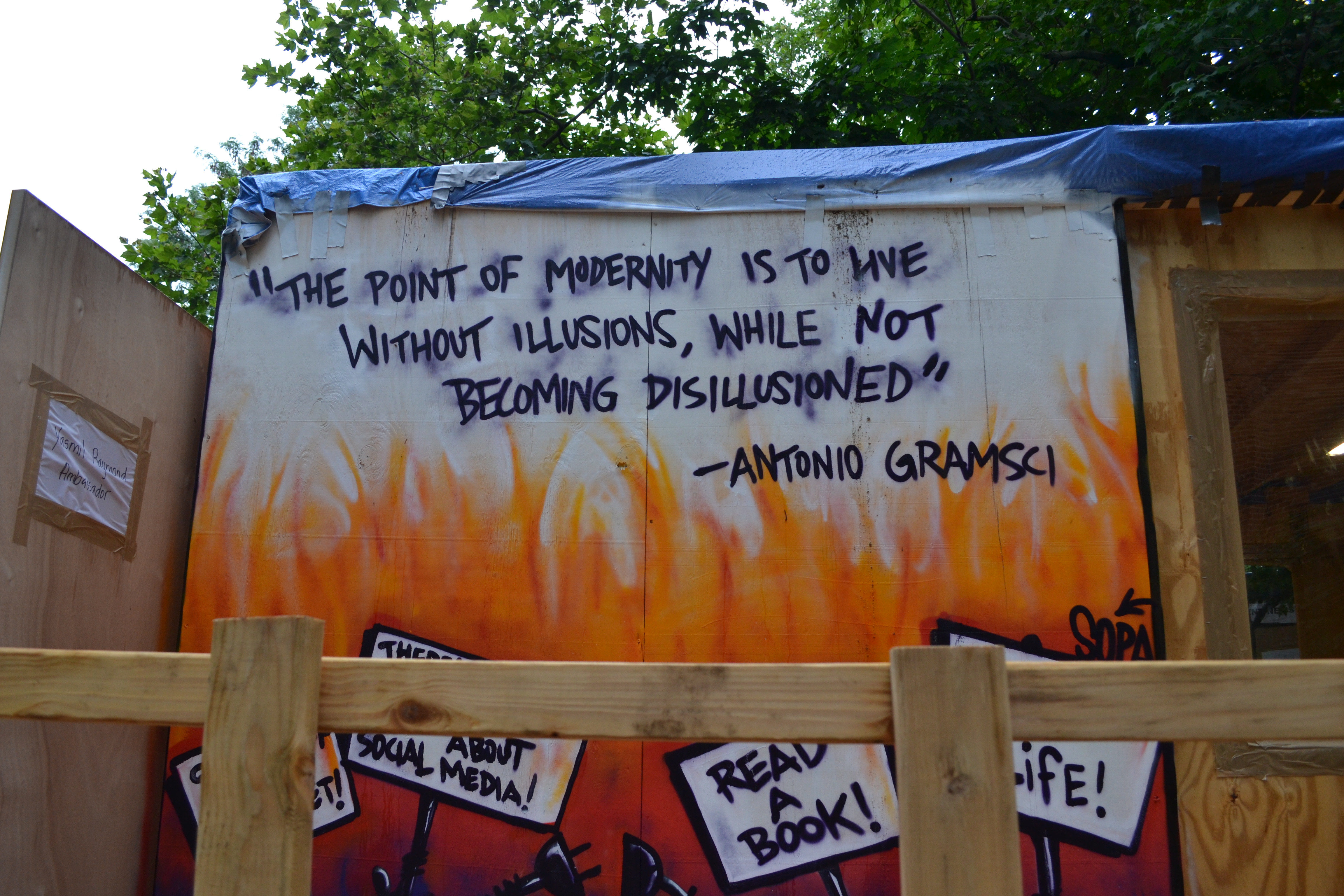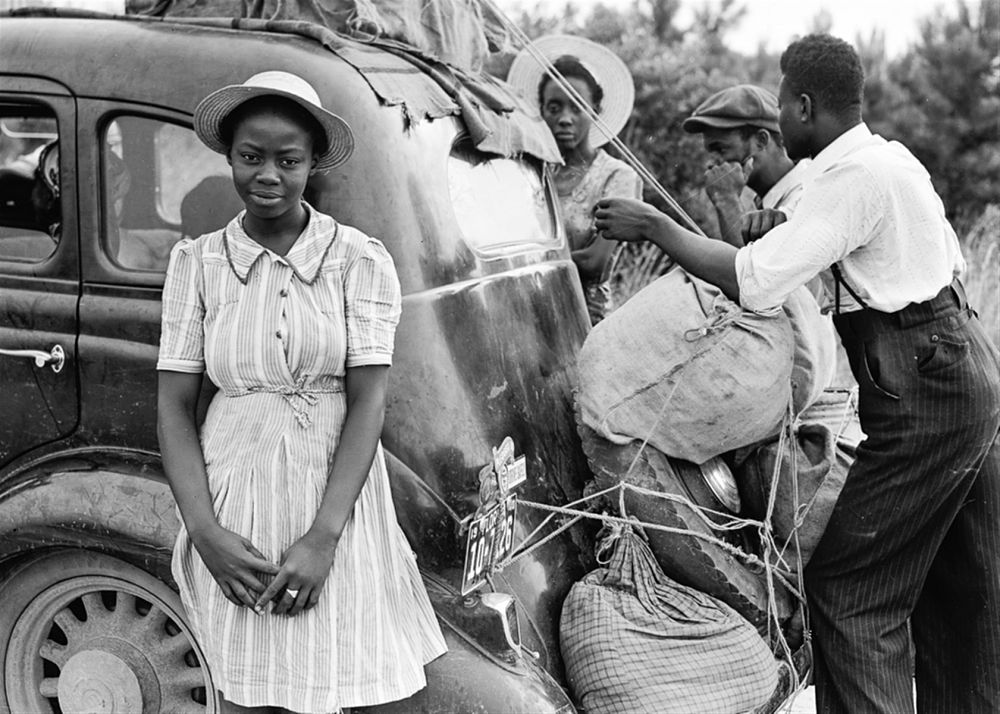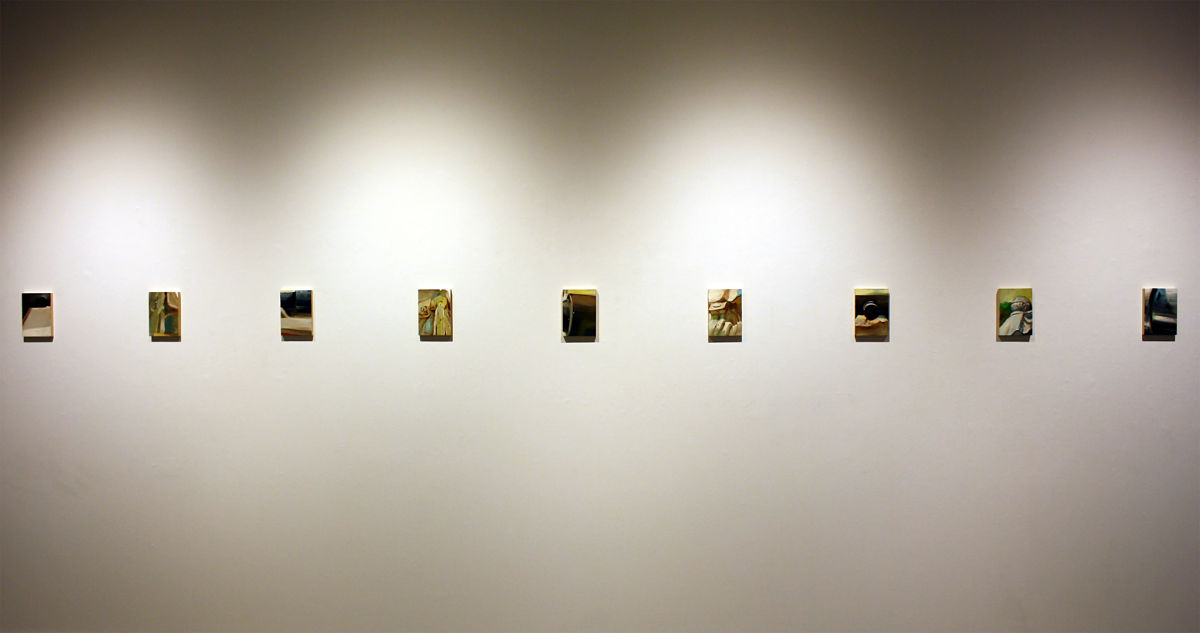The world is rapt with chaos. Ascendant reactionary movements across the globe, largely motivated by overt racism and xenophobia, have disrupted the convenient narrative of uninterrupted social progress, melding the frustrations of a weakening, shrinking, and resentful middle class into anger and fear. Even as representation and recognition of diverse experiences and identities flourish in media and the arts, incipient identitarianism is simultaneously consolidating itself into traditionalist authoritarianism, rolling back any number of hard-earned achievements and, in fact, weaponizing them in service of a perverse cosmology. Although we are living in a time of statistically unprecedented peacefulness and abundance, there is little hope that our lives are actually improving. Instead, dissatisfaction and terror proliferate, no matter where on the political spectrum you stand.
Still, as mentioned, the arts can seem like a guiding light, full of promise. While the levers of political power are toyed with outside of our control, the arts offer a blueprint for something better. Despite persistent and stubborn shortcomings in terms of representation (particularly at the top of the institutional hierarchy), the art world has been able to expose countless people to distinct ways of seeing the world, filtered through a mosaic of subjectivities limitless in scope. As Western society largely closes itself off to new experience in favor of unproductive nostalgia, its most sophisticated structures of cultural output continue to shift in the opposite direction. Although threats to defund organizations like the National Endowment for the Arts seem concerningly credible, and commercial galleries are becoming increasingly consolidated into an enormous few, the overall picture is remarkably healthy — and the socially righteous course unwavering. It would be a mistake to attribute this to anything but the tireless work of individuals, from artists all the way to gallery attendants, who scrutinize the decisions of institutions and bring the injustices they fuel to light. (To illustrate this, we do not have to look further than the recent outcry from over a hundred Whitney employees against the revelation that the museum’s vice chairman, Warren B. Kanders, owns a tear gas manufacturer whose products were deployed at the U.S. border against Central American migrants.)
In this situation that we find ourselves, it is tempting to turn our efforts entirely to the creative sphere where progress seems most promising, to channel resistance to injustice through art. To transform the world, after all, we must first formulate an image of how we want that world to look, and art’s power to transfigure collective perception is apparent and indisputable. Art shows that, despite the arcane, bureaucratic systems that maintain power in the hands of those who deserve it least, the overall trajectory of our society is good, just, inclusive and progressive. At its best, art can even spur change in itself; it can radically shift discourse, inspire protest and even destabilize the mechanisms of oppression. Right?
Unfortunately for those of us interested or invested in these structures, this assessment is inconsistent with the reality of the situation. At best, art plays a peripheral role in social upheaval. It follows the tide, giving imagery to the ethereal and innumerable forces at play in a world contingent on ever-unraveling conflict. The most lauded and relevant contemporary art reflects this fundamental principle of complexity — it is opaque, suffused with meaning that can only be gleaned from the interplay of its context with the context of your knowledge and experience (and that of the extended audience). Focus and organization, the bases for successful social change in the revolutionary process, find themselves at odds with the dithered foundation of today’s critically recognized art. This conflict between the experience of the individual and the aims of the community is mirrored in the perennial struggles faced by radical organizing groups, where fractiousness immediately threatens any organization attempting to coalesce widespread dissatisfaction into a clearly defined ethos. (Within the United States, for example, this dynamic has generated a patchwork of dozens of leftist organizations ranging from the incrementalist Democratic Socialists of America to Bob Avakian’s insurrectionary Revolutionary Communist Party.) Of course, art as a whole did not cause or even define the issues that have spurred such skepticism and resistance to organization. Quite to the contrary, it has been a dutiful follower, an imaged reflection of larger social trends.
The argument that puts art forward as a tool of profound social change1 suffers from the same fallacies as the neo-reactionary screeds about the evils of postmodern theory championed by figures such as Jordan Peterson. It presupposes that these cultural outputs (i.e., art and theory) are in themselves transformative rather than reactive, leading the world down a specific path rather than simply examining the path towards which it already tends. It has never been clearer that consuming specific media can strongly influence one’s worldview, but the effect is more one that amplifies than one that generates. In contemporary art, this is taken as a given, such that any work that claims to synthesize something entirely new (or worse, eternal) without acknowledging its historical or material context (or worse, while seducing us to look past it) is treated with suspicion. We commend art that reflects and complicates our understanding of issues already in the shared lexicon, especially that which can assert itself in a highly specific discourse. We condemn that which is overtly designed to sell, disinterested with its influences or painfully obvious in its message. We can recognize that these distinctions are important for determining how we value works of art beyond a monetary standpoint, but we should ultimately ask: for whom do these arguments hold value, and to what ends?
Bluntly put, the art world is a minuscule niche and its influence on the material reality and daily existence of an overwhelming proportion of the population is totally negligible. While a variety of factors contribute to this situation, among them a lack of investment in arts education and an overwhelming diversity of more accessible and immediately gratifying media, the insularity of the contemporary art world is essentially axiomatic. By its nature, successful avant-garde art obscures its many potential meanings, leaving the viewer to engage with it themselves; otherwise, as Clement Greenberg outlined, we are dealing with Kitsch. In a globalized workforce where specialization is necessary, and where art is a peripheral industry built on servicing high net worth individuals guided by the expertise of well-connected advisers, the uppermost tiers of visual art are largely incomprehensible to lay and half-invested viewers. (In an attempt to combat this, perhaps, the New Museum’s 2015 triennial Surround Audience included multiple paragraphs of explication alongside every single caption. The gesture was disastrous, doing little to entice crowds not already familiar with the theory at hand and even less to surprise and impress the more informed.) To say that art should be more communicative to a larger population, though, would be an ineffectual prescriptive solution, even if there are minor improvements to be made. There are countless reasons that inaccessibility is baked into contemporary visual art, and making plain-spoken, unambiguous paintings for explicitly political purposes would place one in the same boat as someone like Jon McNaughton, who is well known for his modern-day parables depicting Donald Trump respecting the flag, Barack Obama stepping on the Constitution, and other such hokey scenes.
This is not to write off the work of many current luminaries who have grappled successfully with contemporary political issues. ¿De qué otra cosa podríamos hablar?, Teresa Margolles’s provocative installation at the 2009 Venice Biennale, in which the blood of victims of the Mexican Drug War literally dried on the walls and was mopped around the floor, was both painfully clear in intention and brilliantly understated in execution. Artists like Tschabalala Self and Janiva Ellis, both women of color living on either coast of the United States, deftly imbue evocative critiques of identity into what are otherwise masterful explorations of the formal limits of two-dimensional art. Even Parker Bright’s intervention at the 2017 Whitney Biennial, in which he wore a t-shirt reading “Black Death Spectacle” while standing in front of Dana Schutz’s painting of Emmett Till, opened a wide-ranging, if ultimately unsettled, discussion on the depiction of race and ownership of imagery piggybacked onto an otherwise unspectacular artwork, along with calls for the work’s destruction. (This is not to forget similarly complicated and more recent disputes over Sam Durant’s Scaffold, Vincent Valdez’s This City I, Omer Fast’s August and many more, all of which deserve to be examined for their goals and achievements.) For those willing to pay attention, there is an abundance of artwork being made that offers insights into our political situation and ideas as to how we should position ourselves within it. After all, we may be victims of or participants in contingencies we have not yet recognized, and artists can play a crucial role in elucidating ideas that would otherwise be overlooked while leaving the task of making conclusions to the viewers themselves.
The foremost issue, though, is that these successes do not offer a satisfactory substitute to the work of organized political resistance and can even detract from it by limiting the scope of our attention. Positioning oneself properly among what often feels like a dizzying and contradictory discourse is not identical to working towards solutions, and, while many of the social battles being fought within the arts are necessary and overdue, they will come no closer to achieving meaningful long-term goals than an episode of Saturday Night Live unless they are matched with the parallel work of organizing entirely outside of the art world. To look to an oft-cited example of successful political art, Gran Fury, the artistic wing of ACT UP that produced some of the most starkly recognizable graphics responding to the 1980s U.S. AIDS crisis, ultimately served a secondary role to the nonstop direct action executed by ACT UP as a whole. As such, their artistic project must be examined in that context, with the explicit understanding that our visual record will more quickly latch onto iconic graphics than less photogenic and more ephemeral demonstrations and community projects (and the often tedious labor that goes into organizing both the successes and the failures).
Perhaps one of the most embarrassing and unimpactful artistic interventions of recent years has been the Dear Ivanka project, staged over Instagram with the goal of disavowing the former art world fellow traveler and her husband, both of whom have shown themselves to be enthusiastically complicit in the crime and corruption of the Trump administration. A particularly illustrative post from last June shows a picture of the couple standing beside Michael Bloomberg and praises the former New York mayor for being a real billionaire, unlike Ivanka’s father, as well as for being philanthropic and, contrary to Jared Kushner, not “squeez[ing] pennies out of his renters.” In not dwelling on the ethics behind extolling the architect of stop-and-frisk, espionage on Muslim communities and unfettered luxury development across New York City, the pathological elitism and utter myopia of this kind of intervention perfectly represents the problems the art world must confront if it hopes to be relevant to the aims of social justice. Undoubtedly there are countless artists with knowledge and experience of injustice and resistance who would likewise bristle at this nauseatingly self-satisfied work. However, Dear Ivanka illustrates uncannily the whims of the entrenched art world types for whom these projects constitute a successful protest, who raise one fist in the air for solidarity while receiving a check with the other (and see nothing amiss).
In large part, this very same milieu serves as the decentralized gatekeeping apparatus with which budding artists and curators must ingratiate themselves in order to make headway along many of the career paths snaking through the art world, especially those which cross through major institutions and galleries. As such, even as we see an unprecedented interest in exposing audiences to stories untold in an art world that was until recently almost entirely homogeneous, an innate conservatism continues to dictate what goes, which naturally corresponds with what sells or attracts donors. To be sure, artist-run centers and communal studios offer promising alternatives, but their successes are most pronounced when we understand them as self-contained visions of a nonhierarchical community rather than agents of broad change. (This, of course, makes sense, as these collectives are more akin to mutual aid houses than widespread uprisings in terms of their scopes, functions and goals.) Artists can look to each other as an immediate community and work towards the initial steps of organization, but the greater art world is calibrated to exert only the most nominal forms of resistance. The slow process of dislodging the old order from the top levels of museums and galleries is ongoing, but the material fortunes of the arts remain irrevocably cinched to the largesse of clients and donors. Changing sensibilities on social issues among this class reflect less a personal shift than one of understanding where the market is headed — a fundamentally reactive course — and art’s overall economic role is about as far from radical justice as one can get.
Kurt Vonnegut famously said that the combined power of the art world’s resistance to the Vietnam War was “that of a custard pie dropped from a stepladder six feet high.” To be sure, much has changed since then. The arts have become more inclusive and socially aware, offering hope and haven to a far larger and more diverse audience. The Internet has given countless people, especially those outside of major metropolitan centers, the ability to see art that would otherwise be inaccessible. The art world itself has also ballooned in size and prominence, bringing new visibility to an often intimidatingly closed-off industry. And yet, the challenges the arts face to make themselves a viable political force seem more insurmountable than ever. In a damning correlation, stark economic inequality is getting worse and worse while exorbitant spending by the extraordinarily wealthy fuels the continued growth and record-breaking sales of the art industry. The cost of living (and studio space) in the few major cities where art is a pronounced local presence is increasingly prohibitive to the majority of the population, leading to more socioeconomic homogeneity within the most prominent arts communities. Urban consolidation means that little attention is paid to anything that happens outside of these centers, cementing the idea that art is a meaningless hobby for a pampered cosmopolitan elite and leading to more hostility from those already swept away by straightforward, frankly stated reactionary ideals. Even something as anodyne as the belief that art’s primary role is personal expression exposes its unfitness for any revolutionary project where individuality must come second to the needs of the collective. When we combine this understanding with the knowledge of greater social trends that have declawed labor and empowered financial capital, the unreadiness of the arts to tackle the fundamental political questions before us is brought into blinding light.
It is absolutely not the intent of this text to encourage artists to make work that is obvious in every single one of its goals merely so that it can serve a more concrete role, essentially as agitprop, in a political project. Towards that end, there are far better ways to use our time. Nor is the intent to discount the progress achieved within the arts, which is remarkable and deserves to be recognized by and replicated in many other industries. And, of course, it is not to tell artists to immediately halt their art-making entirely and dedicate themselves fully to revolutionary action (though I would not necessarily discourage it). Ultimately, even as we recognize that art must be examined within the sociopolitical context of its genesis, we must decouple from it the expectation that this very same art will produce any measurable change in the vast, indifferent world outside of it. Creating socially aware and politically provocative art is no substitute for the overwhelming organizational hurdles that must be overcome to actually transform an unjust society in a radical way, and selling on the art market runs almost entirely contrary to those goals — even if it provides the livelihood for many necessary critical voices. The sooner we recognize this, the sooner we can begin talking about what purposes, not necessarily creative, we can serve within a political project more important than ourselves; the sooner we will get to the fundamental questions of how we can make sustainable spaces within the arts that are truly challenging and confrontational to the mechanisms of power; and the sooner we can stop patting ourselves on the back before the battle is won.
Fittingly, in response to the aforementioned controversy regarding Whitney vice chairman Warren B. Kanders’s ownership of a tear gas manufacturer, museum director Adam Weinberg admitted that the Whitney “cannot right all the ills of an unjust world, nor is that its role.” These words were at their core an excuse to avoid taking an ethical stance that would challenge the financial position of the museum, but they revealed more than they obscured. That is: art and its institutions are not reliable vehicles for radical political change, and it would be a grave mistake to treat them as our primary theatres of resistance. Without a doubt, art holds profound power to generate inspiration and hope in individuals, fueling a community of active and engaged thinkers for whom all of this is of paramount importance. However, to assume that this translates into any degree of power or influence in the world of politics, which is motivated foremost by the interplay of base fears and desires with incomprehensible bureaucracy, characterized by violence and exploitation, and self-aware only when it’s most convenient, is a misstep — a diversion of critical energy from the concrete to the theoretical, from the administrative to the ontological, from action to thought. In these dire currents, we must not confuse one for the other. We must work in parallel modalities, uncompromised on either front, perpetually unsatisfied with any success in one sphere that is not matched by a greater success in the other. Otherwise, we will find ourselves returning from our small victories only to realize that, while we were away, we lost everything else.
- The kind found in many writings on Ai Weiwei’s career (https://www.vox.com/world/2017/6/27/15839188/ai-weiwei-art-dissident-hirshhorn-dc-installation-activist) or, unsurprisingly, in a number of TED Talks (https://www.ted.com/playlists/476/powerful_art_activism), to name just a couple.
Photo credit: Andrew Russeth via Creative Commons; Thomas Hirschhorn, Gramsci Monument, 2013




